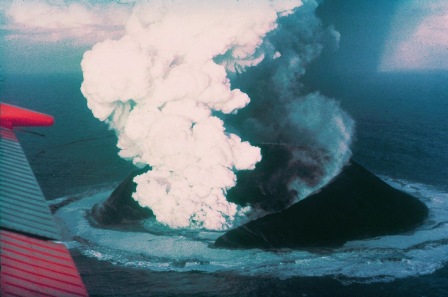The First Five Years of Creation
Psalm 44:1b
“We have heard with our ears, O God, our fathers have told us, [what] work thou didst in their days, in the times of old.”
How old did the Earth look five years after the creation? Geologists tell us that it takes hundreds of thousands of years to wear down new rock into sand and soil and for the sea to cut a beach. If this was true, one would not expect to see beaches or soil on an Earth that was only five years old. Or would we?
 Off the coast of Iceland, over 300 feet below the surface of the ocean, hot volcanic rock began to seep into the cold ocean water in 1963. By 1967, over half a cubic mile of new, hot rock had formed a brand new island where there had once been only ocean. This new island was named Surtsey.
Off the coast of Iceland, over 300 feet below the surface of the ocean, hot volcanic rock began to seep into the cold ocean water in 1963. By 1967, over half a cubic mile of new, hot rock had formed a brand new island where there had once been only ocean. This new island was named Surtsey.
The following summer, scientists arrived on the island to study it. They found that a basalt cliff on the beach had been eroded over 300 feet inland by the sea in less than five years. They found that several parts of the island already had terraced beaches up to 300 feet wide. On the north side of the island, they found that newly formed sand had formed a sand bar that extended almost 1,000 feet out from the original island.
If geologists had not known that Surtsey was less than five years old, they would have guessed that the island was thousands or even hundreds of thousands of years old. After all, many geologists, rejecting the biblical account of a young creation, have used features such as sand beaches to try to prove that the Earth is millions of years old!
Prayer:
I thank You, Lord, for the record of Your deeds that has been preserved for our learning in the Bible. I thank You for the sacrifices of those who preserved it and for those who gave their lives for its truth. Help me to live a life worthy of the great gift of Your saving Word. Amen.
Notes:
Normann, J.O. 1970. “Trends in post-volcanic development of Surtsey Island.” Surtsey Research Progress Report V (Reykjavik: Surtsey Research Society). pp. 95-112.